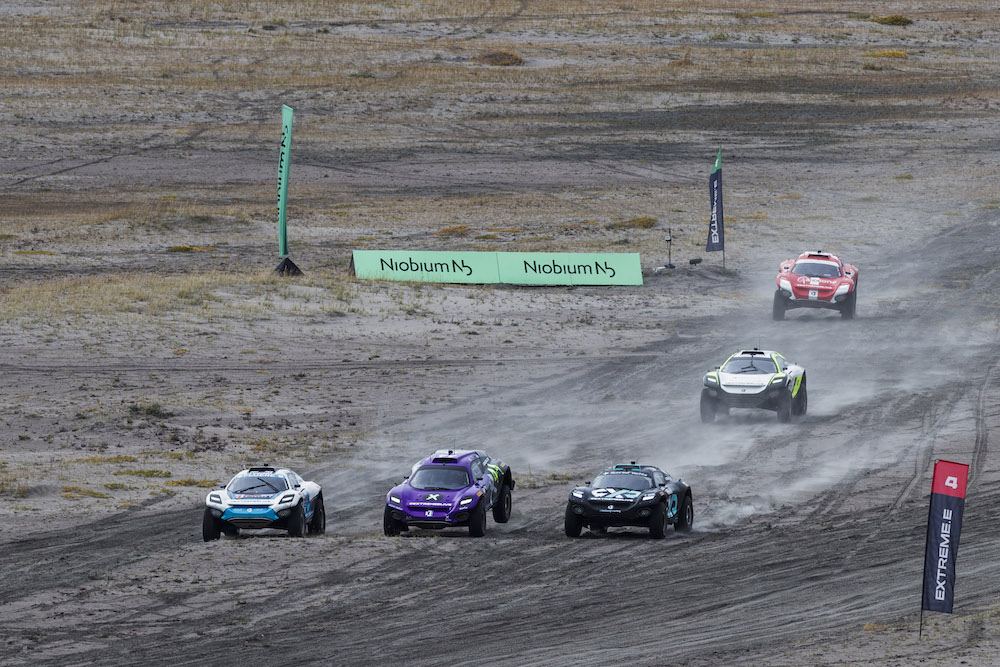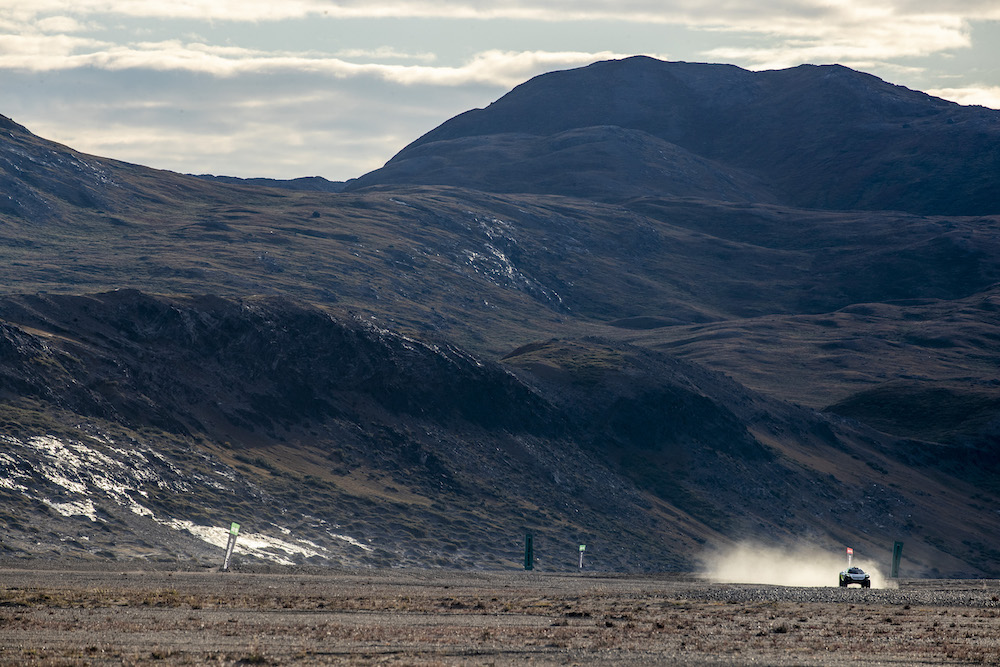In race to save climate, off-road series stages first auto race in Greenland
Arctic X Prix leverages the popularity of motorsports to show how electric vehicles can help slow climate degradation.

Greenland’s first-ever motorsports event was won by the British-Swedish driving team of Catie Munnings and Timmy Hansen, as they claimed victory in the inaugural run of the Arctic X Prix in Kangerlussuaq on Sunday.
The race is the third in the Extreme E off-road series, and it was run on a five-mile circuit that forced the all-electric vehicles to navigate a course of glacial sediment, rock and sand in an area that was once covered by the ice of the Russell Glacier.
Currently in its first year, the Extreme E series is drawing attention to climate degradation by running its races in locations that illustrate the effects that a changed climate has on specific environments.
The first two races in the series were held in Saudi Arabia, to draw attention to desertification and unsustainable water use, and Lac Retba, Senegal, where the focus was on the plight of the oceans.
[How two stretches of road in Arctic Norway and Finland are paving the way for safer driving]
Other races were to be held in the mountains of Nepal, the jungles of Brazil and southern Argentina’s Tierra del Fuego, but they were cancelled due to COVID.
The goal of the Arctic X Prix was to direct attention to receding glaciers and plummeting sea-ice levels. Holding the race in Kangerlussuaq, according to Alejandro Agag, the Extreme E founder and managing director, highlighted “the issues faced by the island including ice melt leading to global sea level rise.”
Although Extreme E is first and foremost a sporting event, the real race, he said, was against a climate crisis that is on the verge of running out of control.
In connection with its races, Extreme E seeks to inform the public about how climate change is affecting the area where the race is held and similar environments. To accomplish this, it has allied itself with a panel of experts led by Peter Wadhams, a respected ocean physicist who was one of the first scientists to document sea-ice retreat.

The panel advises Extreme E on a range of subjects in each location, including education and research, and it oversees the race’s logistics, while also making recommendations for programs the Extreme E organization can support that will benefit local needs.
In Kangerlussuaq, this included installing solar panels at a school to replace its diesel generator and producing educational material related to global warming.
Wadhams was bullish about the combination of motorsports and efforts to minimize climate degradation.
“It’s a fact that more people watch sport than watch scientific documentaries, so I fully support Extreme E’s platform of using motorsport to showcase electric vehicles and promote their adoption as an impactful solution for our planet’s future health,” he said.
In order to minimize carbon pollution in connection with the racing series, all equipment — including the 21 cars competing in the Extreme E series and other equipment used in connection with the races — are transported aboard a ship converted to run on low-sulfur marine diesel.